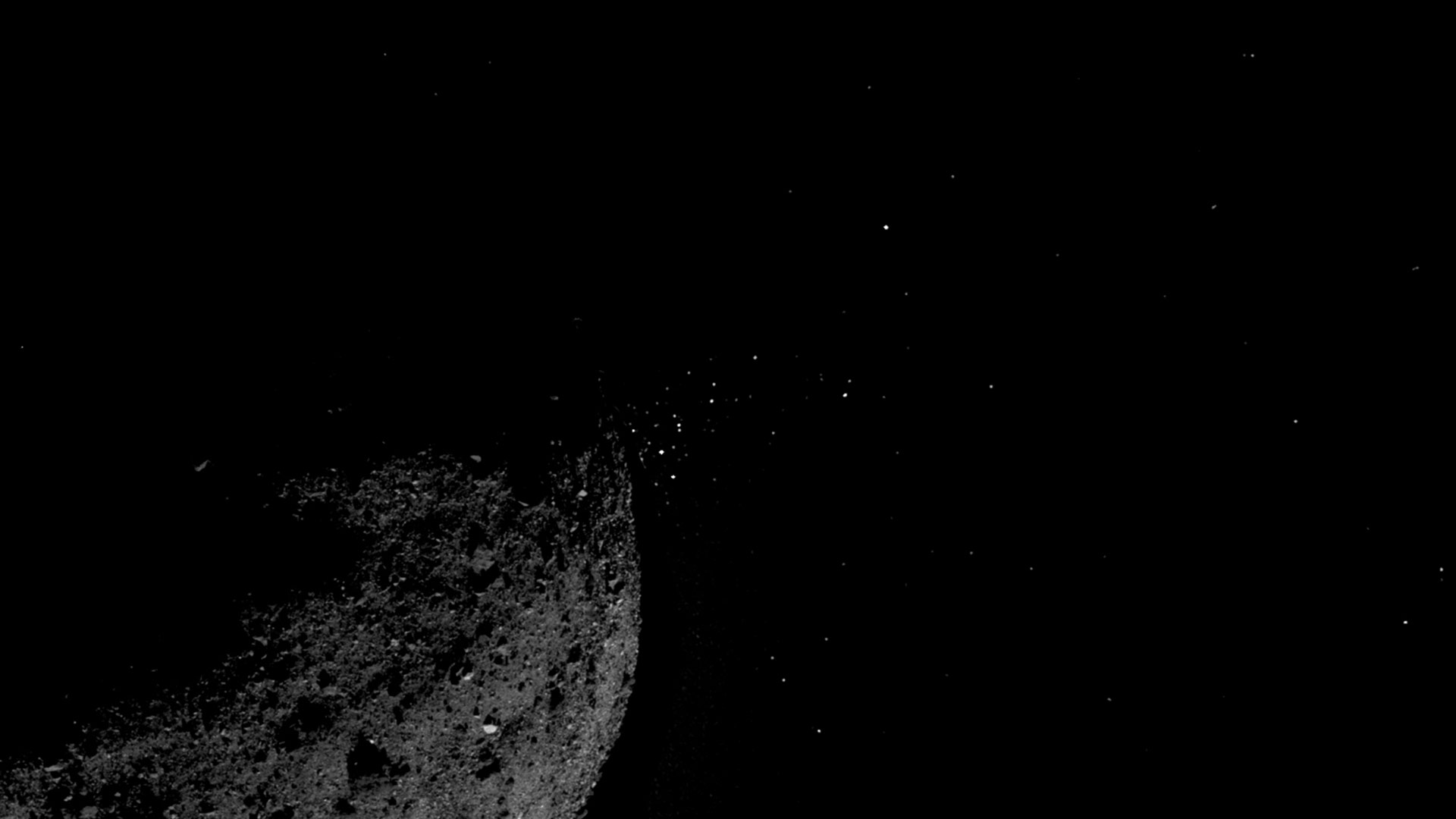 OSIRIS-REx captured pictures of particles around Bennu earlier this year.
OSIRIS-REx captured pictures of particles around Bennu earlier this year.
It's going to be a busy season for space scientists working on the University of Arizona-led OSIRIS-REx mission to an asteroid.
Carl Hergenrother from the University of Arizona Lunar and Planetary Laboratory is among researchers looking closely at the data the spacecraft shortly after it entered orbit around the asteroid Bennu last December. He notes photographs from OSIRIS-REx put Bennu in the category of "active" asteroids in the solar system, after images showed particles appearing to fly from Bennu's surface.
"We're finding some asteroids, especially when they get close to the sun, might have some dehydration if they have a little bit of water," said Hergonrother. "They have a kind of popping effect, like a pop rock kind of effect coming off the surface."
When OSIRIS-REx was launched toward Bennu in September 2016, it left Earth without an instrument package specifically designed to tell scientists more about the particles in the pictures. But Hergonrother and other scientists are not completely disappointed.
"You can learn a lot about how reflective they are, a little bit about their size," said Hergonrother. "And if they are ice particles, then over time they should sublimate in the sunlight, so you can actually watch them get smaller, so there's a lot you can learn just by having the images."
The OSIRIS-REx mission has had a series of amazing milestones all along its two-year journey to Bennu. Just matching the speed and orbit of the asteroid was an accomplishment. Bennu is less than a half-mile wide, and flight engineers maneuvered it into an orbit a mile away.
OSIRIS-REx will need to get a lot closer.
Its main objective, collecting a soil sample from Bennu's surface and returning it to Earth, is still months away. It will require brief contact with Bennu's surface by a specially-designed soil collector. And that's a task photos show will be more challenging than expected.
Jamie Molaro is a research scientist at the Tucson-based Planetary Science Institute. She's studying the pictures of boulders on Bennu's surface.
"The materials that the boulders are made of are different on Bennu's surface than lunar boulders or Martian boulders," she said. "It's interesting to see how that changes what the boulders look and how they break down."
Molaro's area of study concentrates on why rocks on Bennu are cracked and broken. The data she's investigating will give scientists a clearer picture of what kind of soil sample OSIRIS-REx will ultimately have a chance to pick up next year.
"We’re really trying to assess where are the boulders on the surface, and where is it most likely that we'll find fine-grained material," suggested Molaro. "Because it's hard to see in the images."

By submitting your comments, you hereby give AZPM the right to post your comments and potentially use them in any other form of media operated by this institution.